BIENNALS: Whitney Biennial 2024
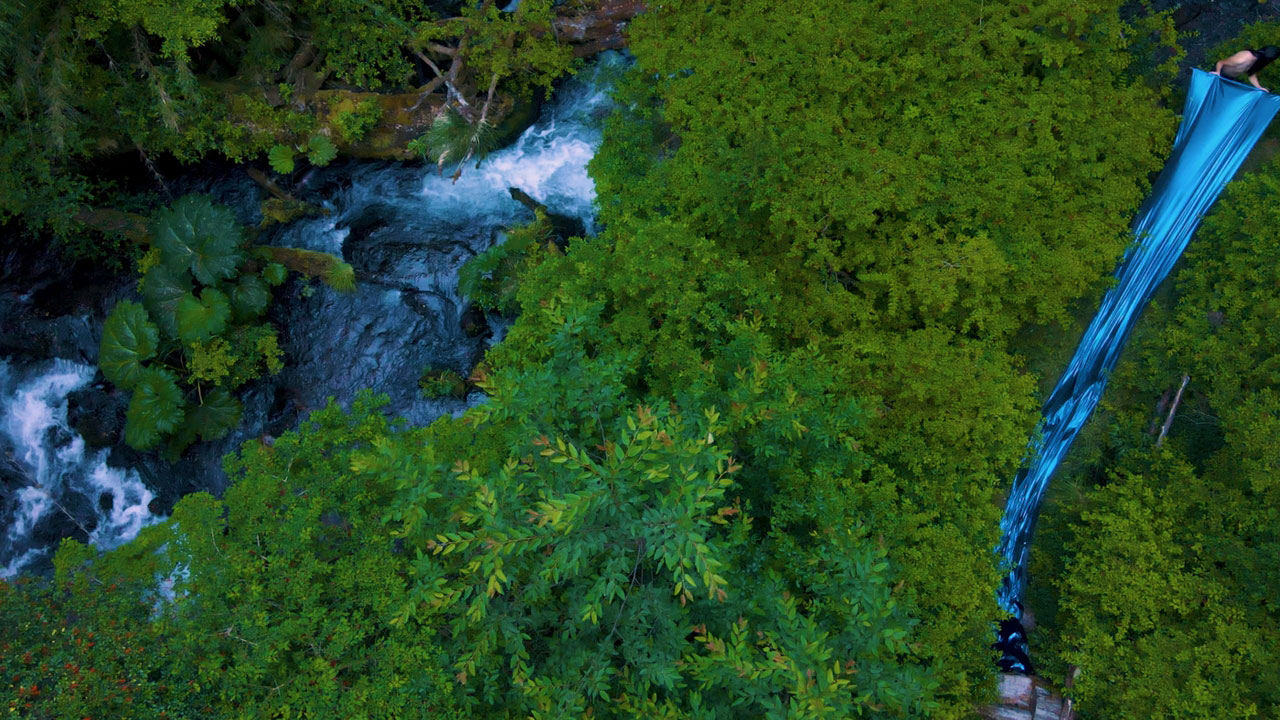 The eighty-first edition of the Whitney Biennial—the longest-running survey of contemporary art in the United States—features seventy-one artists and collectives grappling with many of today’s most pressing issues. From the start we sought to organize a Biennial that would feel like being inside a “dissonant chorus,” as participating artist Ligia Lewis described it, a provocative yet intimate experience of distinct and disparate voices that collectively probe the cracks and fissures of the unfolding moment.
The eighty-first edition of the Whitney Biennial—the longest-running survey of contemporary art in the United States—features seventy-one artists and collectives grappling with many of today’s most pressing issues. From the start we sought to organize a Biennial that would feel like being inside a “dissonant chorus,” as participating artist Ligia Lewis described it, a provocative yet intimate experience of distinct and disparate voices that collectively probe the cracks and fissures of the unfolding moment.
By Dimitris Lempesis
Photo: Whitney Museum Archive
“Whitney Biennial 2024: Even Better Than the Real Thing” features the work of 71 artists and collectives, working across media and disciplines, representing evolving notions of American art. Organized thematically, the exhibition presents artwork across most of the Museum’s gallery spaces and through a robust series of film and performance programs available at the Museum and online. The 2024 Biennial focuses on notions of “the real.” This examination of reality is highlighted through various throughlines and connections between artists, material, and ideas and acknowledges that today, society is at a critical inflection point. This apex has been brought on by the introduction of machine learning models to daily life and media, including the use of artificial intelligence, and society’s complex relationship to the body, the fluidity of identity, and the precariousness of the natural world. The 2024 Whitney Biennial examines rapidly advancing technologies and machine learning tools. Artists Holly Herndon and Mat Dryhurst present work that is part of a project focused on training the data behind AI models, with the hope that AI can be used in creative, even liberating ways. Herndon and Dryhurst’s work are presented in the galleries and via a text-to-image AI program on artport, the Whitney’s portal for Internet art and online gallery space for net art commissions. The body and subjectivity as it pertains to queer identity, body sovereignty, motherhood, the aging body, and the trans body is a critical throughline of the 2024 Whitney Biennial. Carmen Winant’s work consists of 2,500 prints assembled to form a collective portrait of the ordinary daily tasks required to provide abortion health care—a project that became much more urgent with the overturning of Roe v. Wade in 2022. In conceiving the work, Winant worked across the Midwest and the South with the archives of special collections, university hospitals, and predominantly clinics in order to collect photographs of staff, physicians, and volunteers taken over a 50-year period. Mary Kelly is presenting part of the final project of her career at the 2024 Biennial. The work titled “Lacunae” (2023), meaning blank spaces or missing parts, starts with the calendar. She uses this calendar as a framework to document her own aging and the passing of friends and loved ones and invites viewers to reflect on materiality as well as the body and its final passage or transformation. For Jes Fan, the body is a site of making. The four sculptures presented were created from 3D-printed CAT scans of the artist’s own body. In these sculptures, injury becomes an allegory of an interior state of being, suggesting that something precious might be generated by invisible wounds borne by queer bodies and bodies of color. On the Museum’s third floor, artist Pippa Garner presents an installation that references the ubiquity of mass-produced consumer goods and the ways that the marketing and design of these goods imply human-like qualities, such as personality and gender. The “impossible inventions” presented in the gallery adopt an almost “mad scientist” approach to the oddity of anthropomorphizing manufactured goods, imagining fantastical second lives for objects that have become obsolete. Some of the works reflect on the artist’s transition—or genderhacking, as she refers to it—which she began at the end of the 1980s.
Material agency and the use of unstable media is a throughline that several artists employ and will result in some works in the 2024 Whitney Biennial changing over time. Suzanne Jackson’s translucent paintings hang in space, suspended without canvas or visible support; the paint becomes an armature for itself. Made from acrylic paint applied in layers, each work is malleable and moves, changing shape over time. Lotus L. Kang presents a major installation that immerses viewers in a world situated between inside and outside, life and regeneration, and emptiness and fullness, suggesting a constant state of transformation. The installation consists of photographic films unfurling from steel joists suspended from the ceiling and a series of floor sculptures made of tatami mattresses and cast aluminum objects. The materials are industrial, portable, modular, and open to change. The installation will be exposed to sunlight throughout the run of the Biennial, which will cause the exposed film to undergo a “tanning” process and change color. Kang likens the film surface to skin and brings the material back to ideas of the body, particularly its porous relationship with environments. By doing this, the artist hints at an unfixed understanding of one’s body, diasporic identity, and the processes of memory. Eddie Rodolfo Aparicio presents a newly commissioned monumental sculpture made primarily with tree amber that moves over time in relation to ambient sunlight and heat. The natural materials used in this work are from trees that were imported to Southern California in the 1950s and 1960s, around the same time as many Central Americans and Mexicans were brought there to work through joint immigrant labor programs. Eventually, the city of Los Angeles began removing the trees after realizing their roots lacked space to grow along city sidewalks, which coincided with an Eisenhower-era immigration policy that began to deport many of these workers who had arrived in the United States legally. Embedded in the amber are facsimiles of archival documents from El Salvador, relating to the mass killings by the military government in the 1930s following the Indigenous rebellion of 1932. As the sculpture changes shape, the objects within it move, suggesting the ways memory and trauma are held in the body and shift over time. Another persistent throughline in the 2024 Biennial is the psychological implications of architectural spaces and the systems of power that they represent. The 2024 Biennial presents the work of Mavis Pusey, including works that have not been seen since the 1970s. Pusey’s work explores ideas of demolition of architecture and, specifically, demolition of buildings in NYC and the Chelsea neighborhood where Pusey lived and worked in the 1970s and 1980s, blocks away from the Whitney’s current location. Cannupa Hanska Luger’s work takes stereotypical Native American iconography of a tipi and flips the structure upside down to celebrate Native technologies and innovations created by the artist’s ancestors and upend viewers’ grounding in time and space to make way for imagined futures free of colonialism and capitalism, where broader Indigenous knowledge can thrive. In the Museum’s ground-floor Lobby gallery, artist Ser Serpas presents sculptures made from natural materials and found objects that function as dual portraits, first of New York City, as seen through cycles of consumption and decay, and then as portraits of the artist herself through the expressive choices she has made. The Museum’s Lobby gallery is accessible to the public free of charge as part of the Whitney Museum’s enduring commitment to supporting and showcasing the most recent work of emerging artists.
Larger histories, particularly those of non-Western communities, and how myth, cosmologies, land, water, Earth, and geological ecosystems relate are also examined in the 2024 Biennial. Dala Nasser creates a space of reflection that intermingles history and myth, past and present, mourning, and the potential for collective mourning. This site-specific sculpture comprises a row of columns draped with bed sheets that create paintings made from charcoal rubbings of rocks found in the Adonis Cave and Temple on Mount Lebanon, north of Beirut. The sheets are then dyed with iron-rich clay from the banks of the Abraham River in Lebanon. Rose B. Simpson’s work consists of four sculptural figures gazing at one another, creating a force field of protection and solidarity that stands in contrast to an unstable world. The work titled “Daughters: Reverence” (2024) conveys strength through the figures’ formal relationship with each other and through their shared ancestry. Five major new immersive video installations address the impact of war, dictatorships, colonialism, and the resurfacing of lost cultural histories. Clarissa Tossin’s film “Mojo’q che b’ixan ri ixkanulab’ / Antes de que los volcanes canten / Before the Volcanoes Sing” (2022), a collaboration with the Maya K’iche ’Kaqchiquel poet Rosa Chávez and the Ixil Maya artist Tohil Fidel Brito Bernal, looks at ways in which contemporary Maya culture is activated by means of both reclamation and recreation. Presented nearby are 3D-printed copies of ancient Maya flutes that appear in the film. Ideas of restitution also appear in Isaac Julien’s “Once Again… (Statues Never Die)” (2022), a five-screen film installation that includes a display of sculptures by Richmond Barthé and 2019 Biennial artist Matthew Angelo Harrison. The installation features interwoven stories addressing the dialogue between American collector Albert C. Barnes and the Harlem Renaissance philosopher Alain Locke, as well as appearances by the poet Langston Hughes, in a critique of colonialism, cultural valuation, and queer desire. In choreographer Ligia Lewis’s first video installation “A Plot, A Scandal” (2023), dancers use movement to explore histories of marronage and revenge. Diane Severin Nguyen’s film installation In “Her Time (Iris’s Version)” (2023–24) depicts an actress named Iris as she rehearses for a leading role in a historical war film about the Nanjing Massacre of 1937 by the Japanese Imperial Army during the Second Sino-Japanese War (1937–45). The immersive environment, where visitors recline on a daybed in a room surrounded by pink and purple ribbons, explores the ways history circulates in the present. Madeleine Hunt-Ehrlich’s “Too Bright to See” (2023–24) highlights the previously obscured life and work of Suzanne Césaire, the Martinican writer and feminist thinker, and a key figure in the Caribbean philosophy known as Négritude, which fused anti-colonialist policies with Surrealist aesthetics. A light installation that is fused with the moving images onscreen suggests the mercurial weather and precarity of the Caribbean.
Sonic space and the use of sound are introduced in the 2024 Whitney Biennial like never before. In the Museum’s main staircase and large freight elevator, artist Holland Andrews composed two site-specific sound works. The work located in the stairwell consists entirely of vocal sounds that, at times, have an ambient effect and, at other times, offer a range of harmony, dissonance, and melody. The artist manipulated the sounds using a pedal-operated effects processor so that their body would be involved in the process of creation. The work meditates on the sensation of receiving information on multiple channels as if the mind were switching stations on a radio. The work located in the elevator features voice and mechanical sounds, including those made by the elevator itself, to create a restorative space. Here, Andrews plays with our perceptions of the machine hum so that we might wonder if the sound is intentional or just the magic of the world, ultimately to discover that it is, in fact, both. For the 2024 Biennial, JJJJJerome Ellis was invited to score the exhibition, responding to its sounds, artworks, and spaces to create a musical composition. The project—which offers another interpretation of the Biennial and point of entry—requires the full installation of the exhibition in order for the artist to begin, and, once complete, will exist on the gallery walls as a set of drawings and notations. These musical scores will also inform a series of performances during the run of the show. Constantina Zavitsanos’s installation is composed of blue-violet light, projected captions, and a ramp that plays speech modulated with infrasonics. Each element of this environment works with and against the limits of perception. The color violet is just within the visible light spectrum, while infrasonic sound waves are frequencies below the threshold of audibility, allowing them to be felt as vibrations but not heard. As visitors interact with the work, it will change the shape of the sound and vibrations, and the captions that transcribe them may also become more or less readable as visitors block the projected light. With this work, Zavitsanos seeks to make space for collective acts of sensing and feeling that highlight some joys of the cross-disability community.
Photo: Seba Calfuqueo, still from TRAY TRAY KO, 2022. HD video, color, sound; 6 min. © Seba Calfuqueo. Courtesy the artist. Photograph by Sebastian Melo
Info: Curators: Chrissie Iles Meg Onli, Min Sun Jeon and Beatriz Cifuentes (Biennial) / with Cheek (Performances), with Korakrit Arunanondchai, asinnajaq, Greg de Cuir Jr, and Zackary Drucker (film program), Whitney Museum of American Art, 99 Gansevoort Street (between Washington and West Streets), New York, NY, USA,Duration: 20/3-11/8/2024, Days & Hours: Mon, Wed-Thu & Sat-Sun 10:30-18:00, Fri 10:30-22:00, Sat, https://whitney.org/


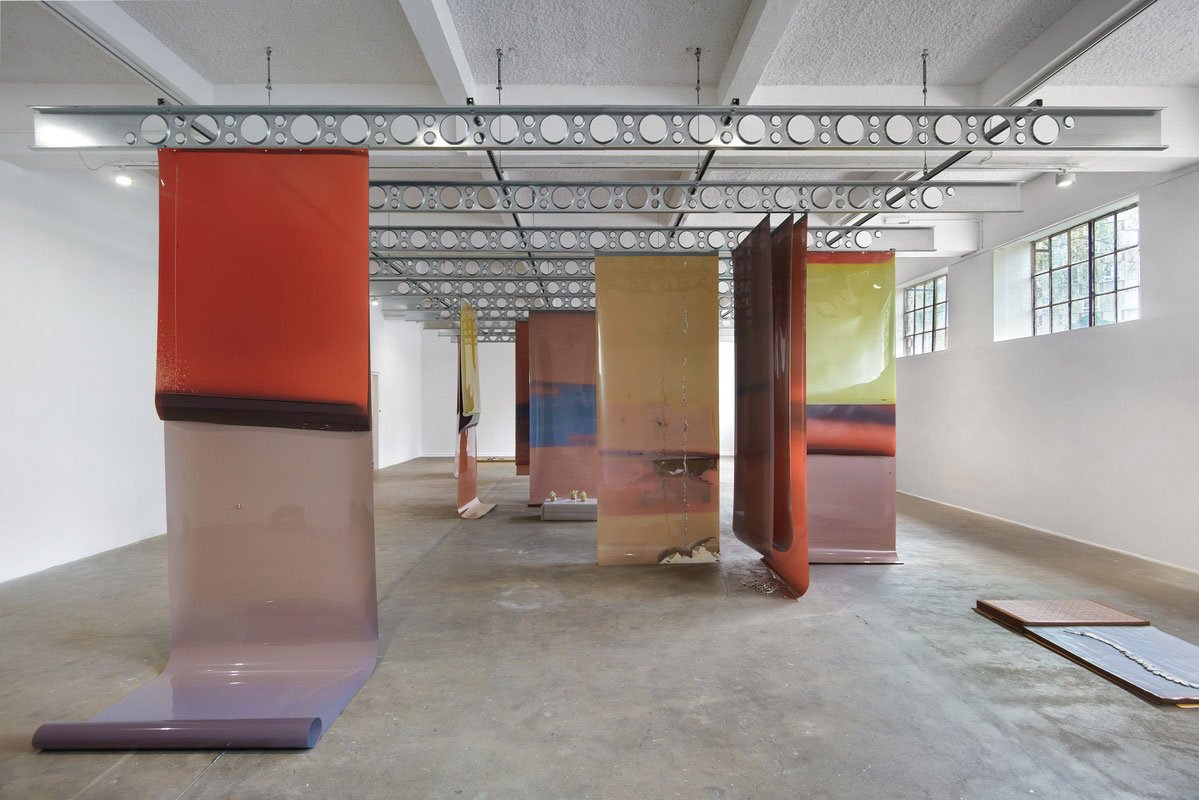
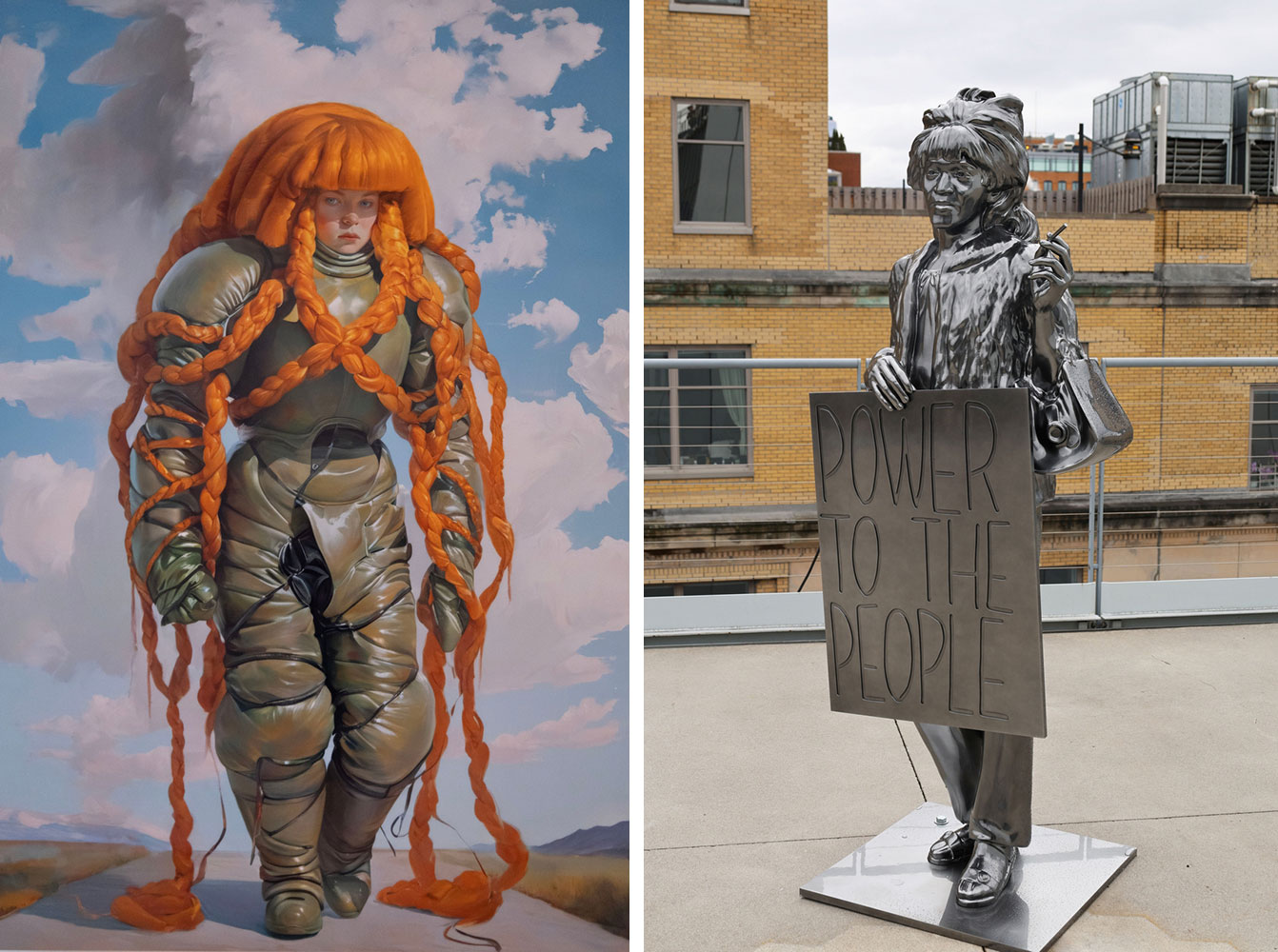
Right: Installation view of Whitney Biennial 2024: Even Better than the Real Thing (Whitney Museum of American Art, New York, March 20–August 11, 2024
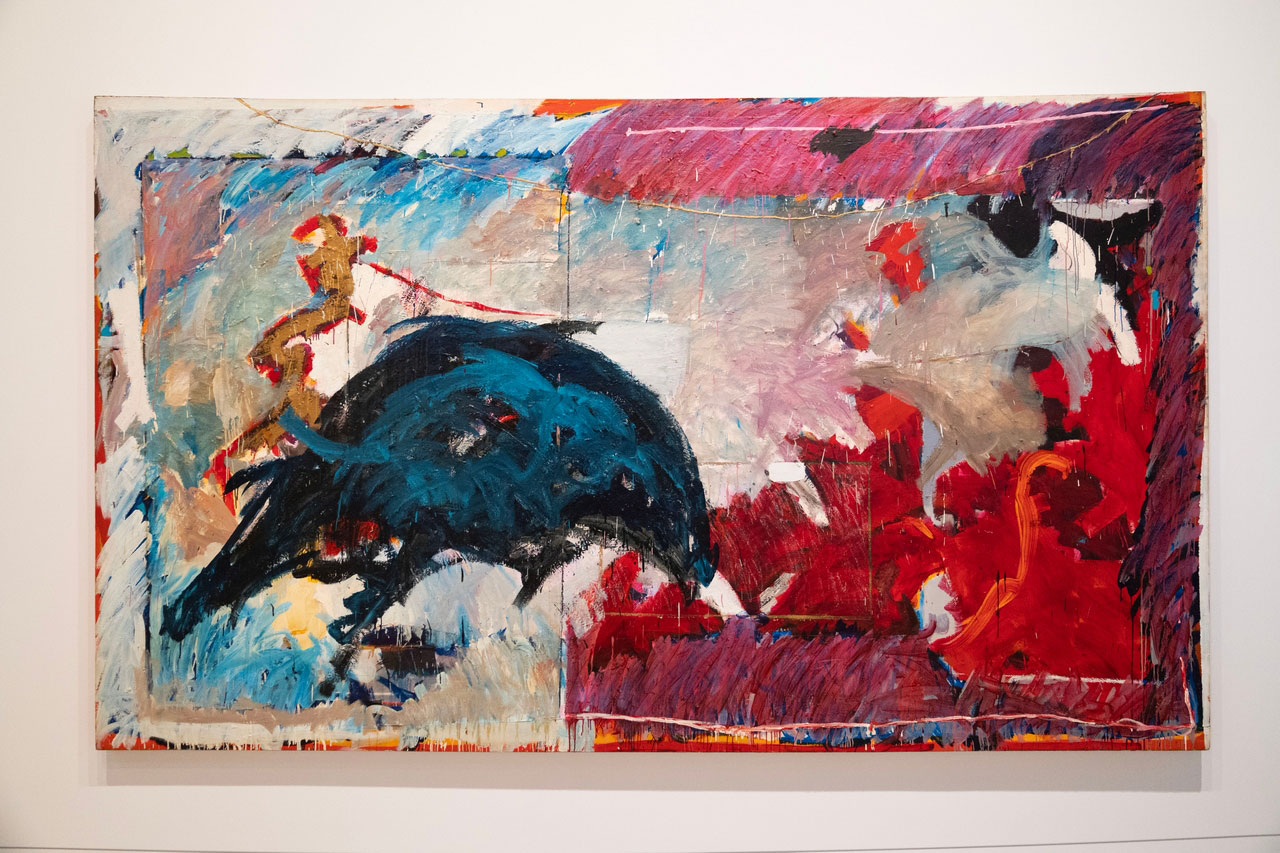
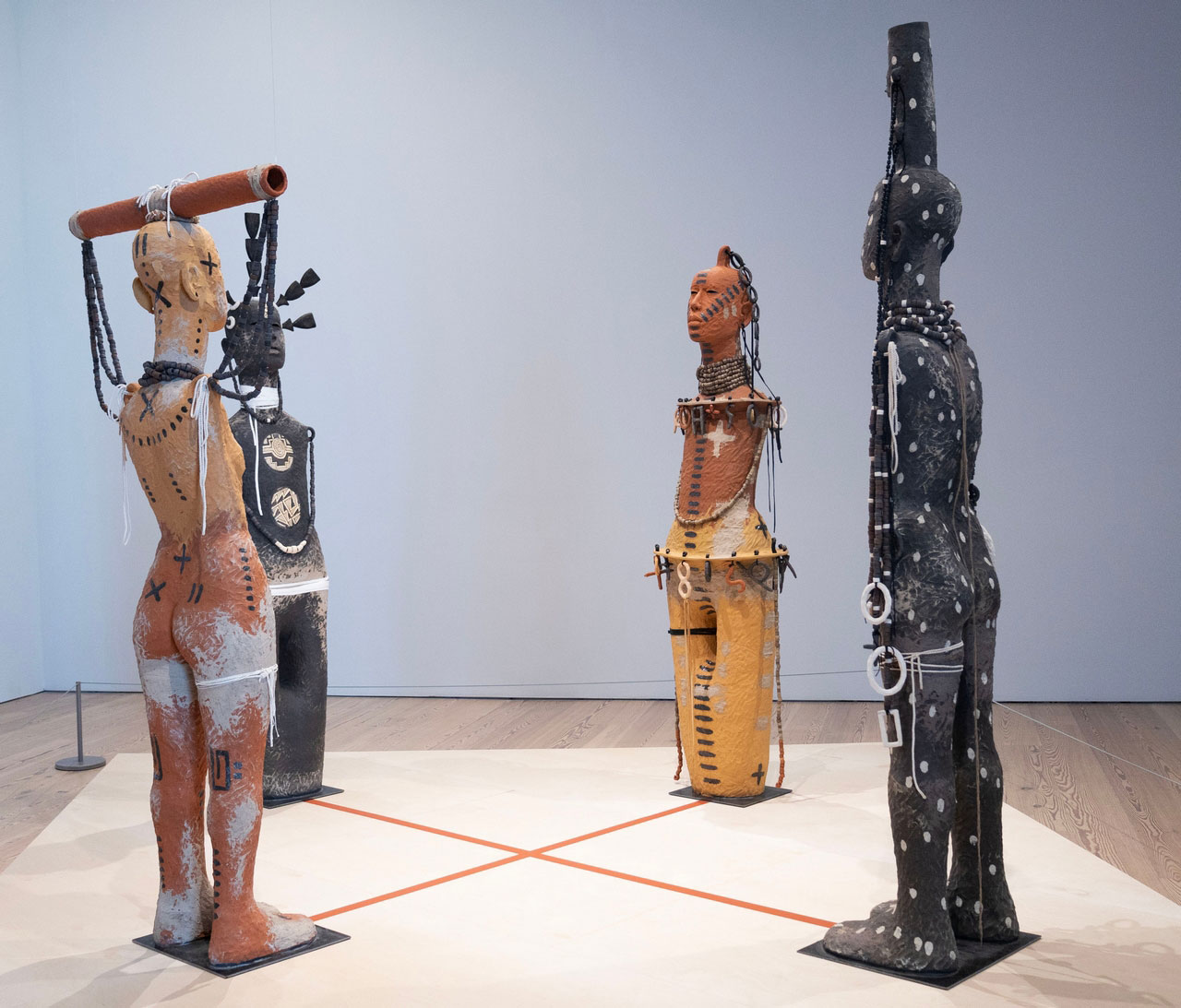
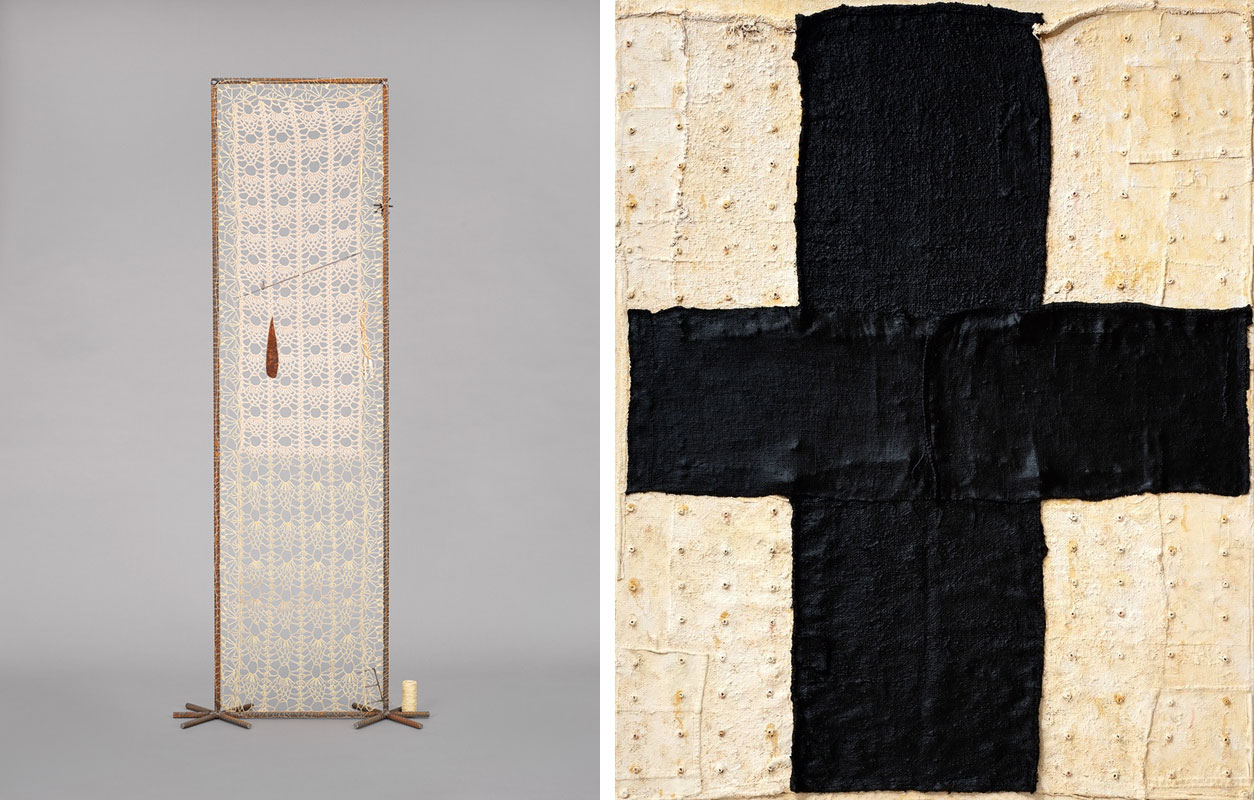
Right: Harmony Hammond, Black Cross II, 2020–21. Oil and mixed media on canvas, 90 3/8 × 72 1/4 × 2 3/4 in. (229.6 × 183.5 × 7 cm). © Harmony Hammond. Courtesy the artist and Alexander Gray Associates, New York. Photograph by Eric Swanson

Right: Karyn Olivier, How Many Ways Can You Disappear, 2021. Potwarp; lobster traps; buoys washed ashore on Matinicus Island, Maine; and rope reproduced in salt, 179 × 98 × 73 in. (454.7 × 248.9 × 185.4 cm). © Karyn Olivier. Courtesy the artist and Tanya Bonakdar Gallery, New York and Los Angeles. Photograph by Pierre Le Hors


